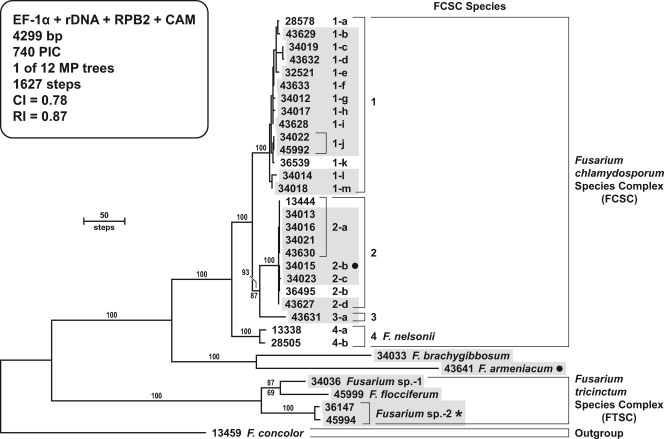FIG. 2.
One of 12 most-parsimonious MP phylograms inferred from the combined data from four loci for the FCSC and related clinically relevant fusaria rooted with sequences of F. concolor NRRL 13459. Arabic numbers and lowercase Roman letters are used to identify four species and their multilocus STs within the FCSC. Dark shading identifies isolates from human clinical and veterinary sources, the latter of which are further distinguished by a solid dot to the right of the NRRL number/ST. A star to the right of Fusarium sp. strain 2 indicates that it was represented by one human and one veterinary isolate. It is unclear which of the three unnamed species within the FCSC represents F. chlamydosporum, if any. Numbers above nodes represent the frequency (percent) with which they were recovered from 1,000 MP bootstrap pseudoreplicates of the data. ML bootstrap values are indicated only below those internodes that differed by ≥5% of the MP value. The present study represents the first report of the five species basal to the FCSC causing mycotic infections in humans and other animals. Fusarium brachygibbosum and F. armeniacum are members of the trichothecene toxin-producing clade, whereas the other non-FCSC ingroup species are members of the FTSC.

